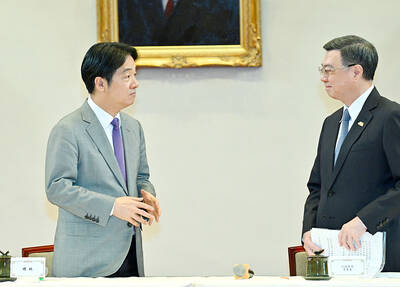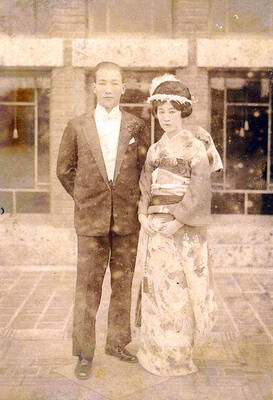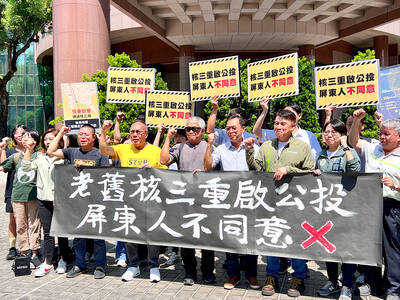Hou Hsiao Hsien (侯孝賢) and the wuxia genre seem to be unsuited as the martial-arts cinema, which traditionally focuses on movement and action, is not the type of film one easily associates with the Taiwanese auteur known for his quiet, minimal cinematic ethos.
But Hou’s fans can rest assured. The Assassin (刺客聶隱娘), the director’s eagerly anticipated first foray into the martial-arts realm, turns out to be ravishingly beautiful work of wuxia that is instantly recognizable as a Hou film.
The story is set during the decline of the Tang Dynasty, a time when the provinces maintained uneasy relations with the Imperial Court.

Photo courtesy of Tsai Cheng–tai, Spot Films
The story revolves around Nie Yinniang, a female assassin who works for master and princess-turned-nun Jiaxin (Sheu Fang-yi (許芳宜).
A sequence soon follows that gorgeously demonstrates how different Hou’s approach is going to be. Yinniang practices her craft; the action plays out at a distance, behind glittering foliage and flashing blades. Not even a glimpse of blood is shown.
However, after Yinniang backs down from an assignment because she sees her target with his young son, a disappointed Jiaxin orders her back to Weibo, her hometown, to assassinate Lord Tian Ji’an (Chang Chen, 張震). Weibo is the strongest of the provinces that have become hotbeds of rebellion as the authority of the Emperor weakens.
Yinniang returns home after an absence of 13 years, lurks in the shadows and observes.
As we soon learn, Yinniang is the general’s daughter. She was taken from her family at age 10 and placed in the care of Jiaxin, who trained her to become a killer tasked with eliminating warlords. Yinniang’s new target, Lord Tian, happens to be her cousin, to whom she was once promised in marriage as a child.
Meanwhile, Lord Tian reigns over his realm with ruthlessness. In the lord’s household, brewing intrigue also takes place between his murderous wife (Zhou Yun, 周韻) and favorite concubine Huji (Hsieh Hsin-ying, 謝欣穎), who is pregnant with his child.
So far, this summary has revealed more clues than the audience will be able to discern. For the wuxia tale, Hou and his writers take inspiration from a short story entitled Nie Yinniang (聶隱娘) in the collection Legendary Tales (傳奇) by Tang dynasty scribe Pei Xing (裴鉶).
The characters and plots were originally constructed to fuel the filmmakers’ vision, but a considerable amount of material was eventually left on the cutting-room floor. Dialogue is minimized so that characters express their complex emotions cinematically.
But this requires patience from the viewer. The characters, speaking classical Chinese, move from one exquisitely composed frame to another. They whisper behind fluttering curtains and flickering candle flames, stand in solitude on precipitous clifftops obscured by mist or disappear slowly toward the lush horizon.
The cinematographer, Mark Lee (李屏賓), has chosen not to concentrate on the characters themselves, but to locate them within the larger landscape. Lee prefers the classic ratio instead of the wide-screen format because it more eloquently expresses the director’s vision.
Hou clearly didn’t intend to make a conventional epic. It’s not so much about the narrative and plot, as it is about the people. As with Cafe Lumiere (珈琲時光, 2003) and Flight of the Red Balloon (2007), The Assassin is about a heroine’s quest.
Hou’s wuxia is seen through the eyes of Shu Qi’s character, who tries to make sense of the incomprehensible world around her with determination.
With Assassin, Hou sets out to do something new with the wuxia genre as well as his own cinema. He places his characters into a bygone life re-imagined and strives to tackle the anachronistic tension without reservation. Perhaps, for this reason alone, the film will remain a rare curio in the eyes of the auteur’s fans.

Under pressure, President William Lai (賴清德) has enacted his first cabinet reshuffle. Whether it will be enough to staunch the bleeding remains to be seen. Cabinet members in the Executive Yuan almost always end up as sacrificial lambs, especially those appointed early in a president’s term. When presidents are under pressure, the cabinet is reshuffled. This is not unique to any party or president; this is the custom. This is the case in many democracies, especially parliamentary ones. In Taiwan, constitutionally the president presides over the heads of the five branches of government, each of which is confusingly translated as “president”

Sept. 1 to Sept. 7 In 1899, Kozaburo Hirai became the first documented Japanese to wed a Taiwanese under colonial rule. The soldier was partly motivated by the government’s policy of assimilating the Taiwanese population through intermarriage. While his friends and family disapproved and even mocked him, the marriage endured. By 1930, when his story appeared in Tales of Virtuous Deeds in Taiwan, Hirai had settled in his wife’s rural Changhua hometown, farming the land and integrating into local society. Similarly, Aiko Fujii, who married into the prominent Wufeng Lin Family (霧峰林家) in 1927, quickly learned Hoklo (commonly known as Taiwanese) and

The low voter turnout for the referendum on Aug. 23 shows that many Taiwanese are apathetic about nuclear energy, but there are long-term energy stakes involved that the public needs to grasp Taiwan faces an energy trilemma: soaring AI-driven demand, pressure to cut carbon and reliance on fragile fuel imports. But the nuclear referendum on Aug. 23 showed how little this registered with voters, many of whom neither see the long game nor grasp the stakes. Volunteer referendum worker Vivian Chen (陳薇安) put it bluntly: “I’ve seen many people asking what they’re voting for when they arrive to vote. They cast their vote without even doing any research.” Imagine Taiwanese voters invited to a poker table. The bet looked simple — yes or no — yet most never showed. More than two-thirds of those

In the run-up to the referendum on re-opening Pingtung County’s Ma-anshan Nuclear Power Plant last month, the media inundated us with explainers. A favorite factoid of the international media, endlessly recycled, was that Taiwan has no energy reserves for a blockade, thus necessitating re-opening the nuclear plants. As presented by the Chinese-language CommonWealth Magazine, it runs: “According to the US Department of Commerce International Trade Administration, 97.73 percent of Taiwan’s energy is imported, and estimates are that Taiwan has only 11 days of reserves available in the event of a blockade.” This factoid is not an outright lie — that